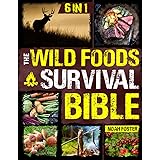Imagine finding yourself in a true wilderness scenario, miles from modern conveniences, when a sudden injury or illness strikes. Access to pharmaceuticals becomes a distant memory. In such critical moments, understanding the natural pharmacy around you can mean the difference between prolonged suffering and effective relief. As Lilly highlights in the video above, one of nature’s most powerful medicinal allies is the humble willow tree, a cornerstone of traditional survival medicine.
Willow Bark: An Ancient Remedy for Modern Survival Medicine
For centuries, various cultures across the globe have revered the willow for its potent therapeutic properties. This widespread deciduous tree, found predominantly in temperate climates, offers more than just shade and flexible branches. Its bark, in particular, contains a compound known as salicin, the natural precursor to what we now recognize as aspirin.
While the video touches upon the general presence of willow across the world, it’s crucial for the survivalist and natural medicine practitioner to understand the nuances of species identification. Indeed, not all willow species possess the same medicinal potency; some, like the White Willow (Salix alba), Crack Willow (Salix fragilis), and Purple Willow (Salix purpurea), are particularly noted for their higher salicin content. Identifying these specific varieties is a critical first step in harnessing this powerful survival herb effectively.
The Therapeutic Power of Salicin: Nature’s Analgesic and Anti-inflammatory
The primary active compound in willow bark, salicin, is a glycoside that, upon ingestion, is metabolized into salicylic acid in the human body. This metabolic process is key to understanding its efficacy. Salicylic acid then acts as a potent analgesic, effectively mitigating pain, and also possesses significant antipyretic properties, helping to reduce fever. Furthermore, its anti-inflammatory actions are invaluable in treating swelling, sprains, and other inflammatory conditions that are common in demanding outdoor or survival situations.
In essence, willow bark offers a trifecta of benefits: pain relief, fever reduction, and anti-inflammatory action. These are precisely the properties one would seek in conventional over-the-counter medications, making willow bark an indispensable component of any natural survival medicine kit. Its broad therapeutic scope ensures it can address a wide range of common ailments, from headaches and muscle aches to joint pain and general malaise.
Optimal Extraction Methods: Crafting a Potent Decoction
As demonstrated in the video, the most effective method for extracting salicin from willow bark is through a decoction, essentially a strong tea. This process involves simmering the bark in water for an extended period, allowing the water to draw out the medicinal compounds. The potency of the resulting brew hinges on several factors, including the age of the bark, the species of willow, and the duration of simmering.
When preparing a decoction, prioritize inner bark from younger branches, as it typically contains higher concentrations of salicin. Use a sharp knife or similar tool to carefully strip the bark from thin branches or twigs, avoiding deep incisions that could harm the tree. Roughly chop or shred the bark to increase its surface area, which facilitates better extraction. A general guideline is to use approximately one tablespoon of bark per cup of water, simmering for 10-15 minutes or until the liquid reduces and deepens in color.
Important Considerations and Potential Side Effects
While willow bark tea is a valuable survival herb, it’s not without its drawbacks and crucial considerations. As Lilly points out, the taste can be quite “disgusting” and may cause stomach upset for some individuals. This gastric irritation is a known side effect of salicylates and should be managed by consuming smaller doses or with food if possible.
Furthermore, it is imperative to acknowledge the contraindications for willow bark use. Individuals with a known allergy to aspirin or other salicylates should absolutely avoid willow bark. It is also generally advised against use in children and teenagers due to the risk of Reye’s syndrome, a rare but serious condition associated with aspirin use in those recovering from viral infections. Pregnant or breastfeeding women, and those on blood-thinning medications or with kidney or liver conditions, should also exercise extreme caution or avoid it entirely. Proper identification and understanding dosage are paramount in any survival medicine scenario.
Sustainable Harvesting and Identification Best Practices
For any interaction with wild plants, sustainable harvesting practices are non-negotiable. When collecting willow bark, always take only what you need and avoid girdling the tree, which can cause its demise. Strip small sections of bark from multiple branches rather than large portions from a single area. This ensures the tree can continue to thrive and regenerate for future use.
Accurate identification is the bedrock of safe and effective herbalism. While many willow species share similar characteristics, some key indicators can aid in identification: long, narrow leaves, often with serrated edges; catkins (flowers) appearing before or with the leaves; and flexible, often drooping branches. When in doubt, it is always safer to refrain from consumption, as misidentification can lead to adverse effects. Consulting field guides and confirming with experienced foragers are vital steps before incorporating any wild plant into your survival medicine arsenal.
Beyond Pain Relief: Expanding the Willow’s Utility
While the medicinal properties of willow bark are undeniably its most celebrated attribute in a survival context, the tree itself offers a plethora of other uses. Its flexible branches have been traditionally used for basket weaving, cordage, and crafting primitive shelters. The inner bark can also be processed into a digestible fiber, albeit as a last resort in extreme famine situations. This multifaceted utility further solidifies willow’s status as a top-tier survival resource, extending its value far beyond just natural pain relief.
Understanding and respecting the full potential of willow bark in survival medicine equips you with vital knowledge. It bridges ancient wisdom with modern necessity, offering a reliable natural alternative when conventional options are unavailable. Always exercise caution, prioritize identification, and respect the power of this profound survival herb.











